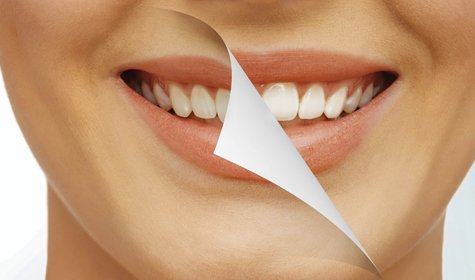Many of us strive for the perfect, bright white smile that lights up a room. For some, people, this means bleaching, bleaching and more bleaching; but is it possible to over bleach? Are there any unintended consequences on our pursuit toward the perfect smile?
While there aren’t any major health effects to bleaching on a regular basis, there are some important concepts to keep in mind when deciding how often to bleach. Charles Wakefield, D.D.S., professor at the Texas A&M University Baylor College of Dentistry, provides the following advice for people seeking those pearly whites.
Some stains can’t be removed
Before you put on your fifth whitening strip of the week, consider this: Consistently bleaching your teeth won’t always leave you with a whiter smile. While excessive bleaching doesn’t injure the teeth, it can be frustrating to people who simply can’t get rid of a stubborn stain.
“There are some stains that can’t be polished off or removed with whitening strips,” Wakefield said. “Some brown or white stains can be the result of excess fluoride that has affected the enamel, or the outer surface of the teeth; while blue, grey or violet stains can be caused by certain medications that alter the mineral structure of the tooth during development.”
There could be side effects
“The most common side effect of bleaching is tooth sensitivity. This can range from mild to extreme sensitivity to cold air or liquids,” Wakefield cautioned. If you start having extreme sensitivity, this can usually be treated with desensitizing pastes like Sensodyne. However, you may want to consider reducing the frequency or the length in which you bleach your teeth.
On some occasions, the bleach used at the dentist’s office has may cause gum sensitivity. This is due to the higher concentration of hydrogen peroxide. When the bleaching trays lie on the edges of the gum, some patients’ gums turn white in a few seconds and cause sensitivity. While there’s no way to know who will have this reaction, your dentist will use a lower concentration for a shorter period the next time you get your teeth bleached.
For patients with dry mouths, take a closer look at the type of whitening products you use. If the product is acidic (usually a pH of less than 5.2), there’s the possibility of surface demineralization, roughness or shiny smoothness. Since saliva remineralizes the tooth’s surface, people with dry mouths need to be more cautious about their bleaching habits.
Another possible side effect is an unnatural, single-shaded smile. “Normal teeth are polychromatic, that is, they are a little darker at the gum line and lighter in the middle, with varying translucency at the very edge. Excessive bleaching tends to make teeth monochromatic, appearing to be the same shade at the end of the tooth as well as at the gum line,” Wakefield explained.
Not all products are made equally
It seems that everywhere we turn there’s a dental product that promises us a whiter smile. However, some products aren’t as effective as they are marketed. “Whitening toothpastes may have a higher degree of abrasiveness to help clean stains from the tooth surface, but do not reach deeper areas,” Wakefield said.
The most effective whitening products use hydrogen peroxide to remove stains. Over-the-counter whitening products use a lower concentration of hydrogen peroxide than the bleach used at the dentist’s office, so they may not be as effective or will require more applications.
If you decide whitening strips are most convenient for you, Wakefield advises pushing the strips between the teeth, rather than allowing them to lie flat on the surface. This will help to avoid a bright spot in the middle of the tooth.
“How often someone uses whitening products is at the user’s discretion. Some people are happy with a touch-up during their visit to the dentist, while others prefer to use whitening strips on a more regular basis,” Wakefield said.
In the end, it’s important to keep in mind that white teeth don’t necessarily mean healthy teeth: Don’t skip out on regular dental check-ups on an annual or bi-annual basis.
Texas A&M Health Science Center is Transforming Health through innovative research, education and service in dentistry, medicine, nursing, pharmacy, public health and medical sciences. Original article: http://news.tamhsc.edu/?post=pearly-whites-is-there-such-a-thing-as-too-much-bleaching

